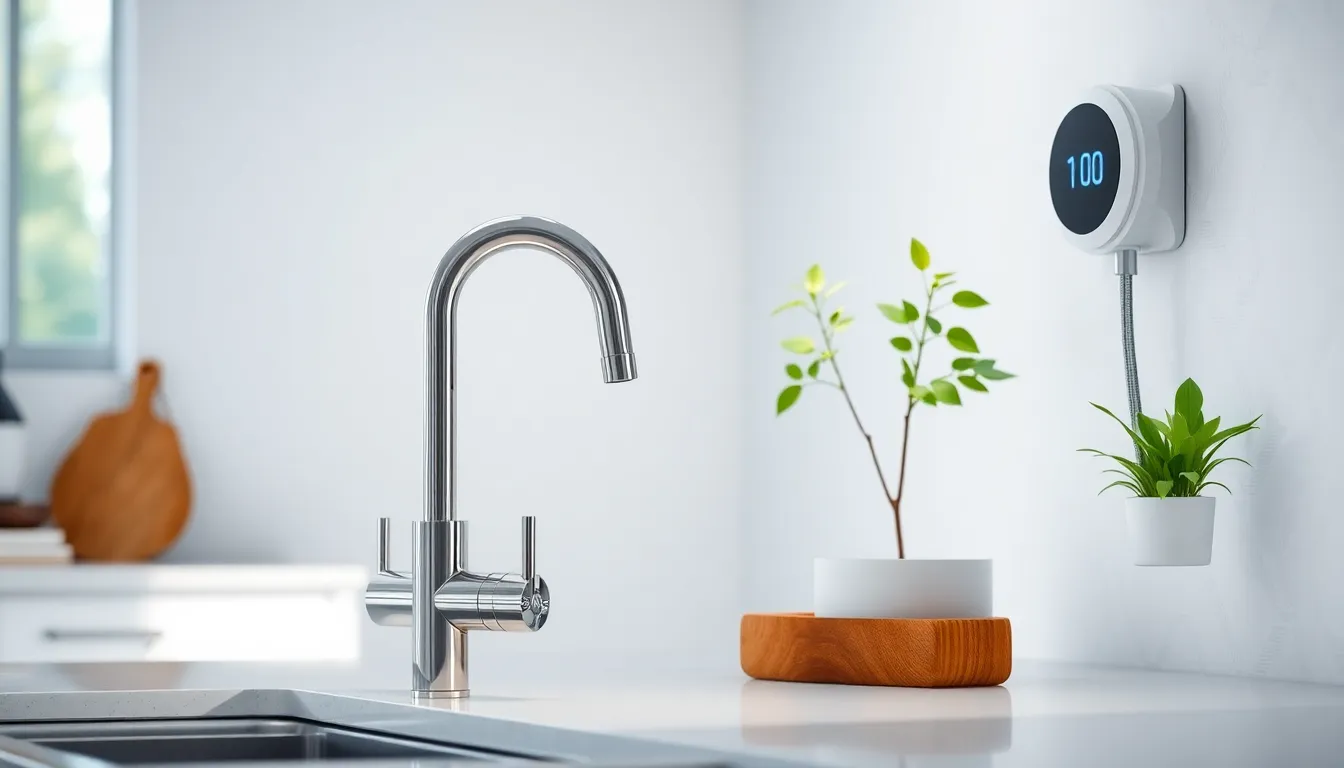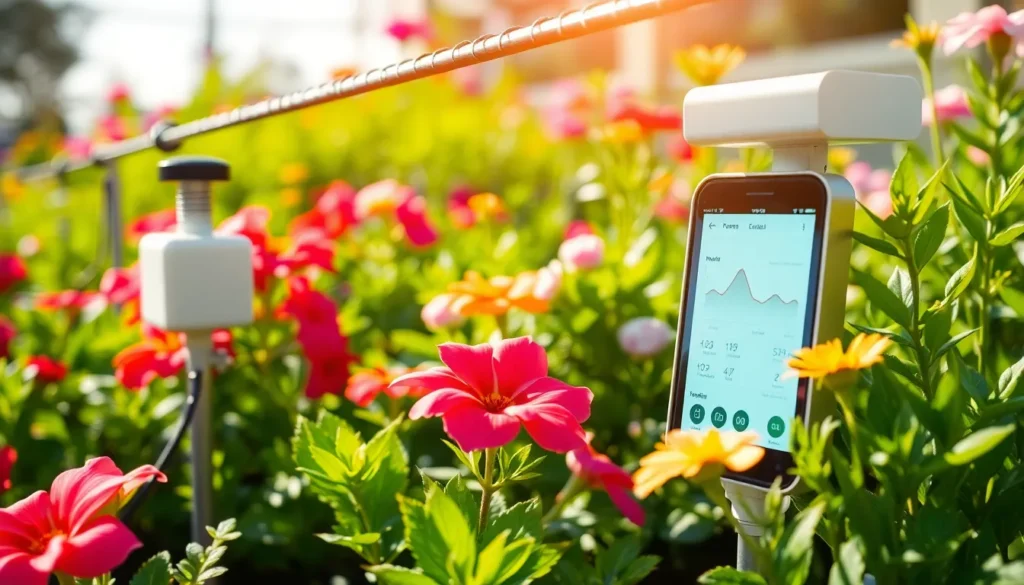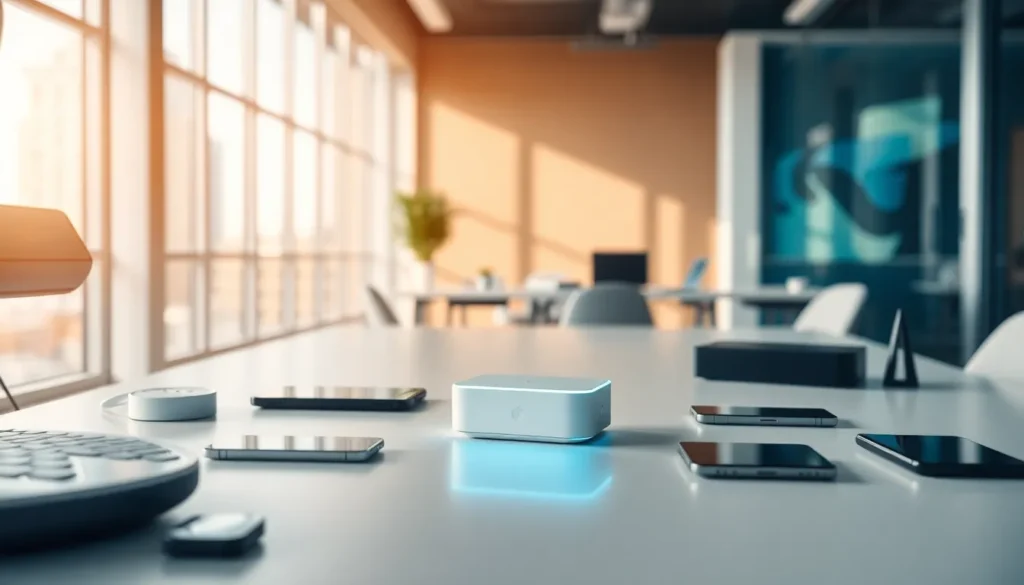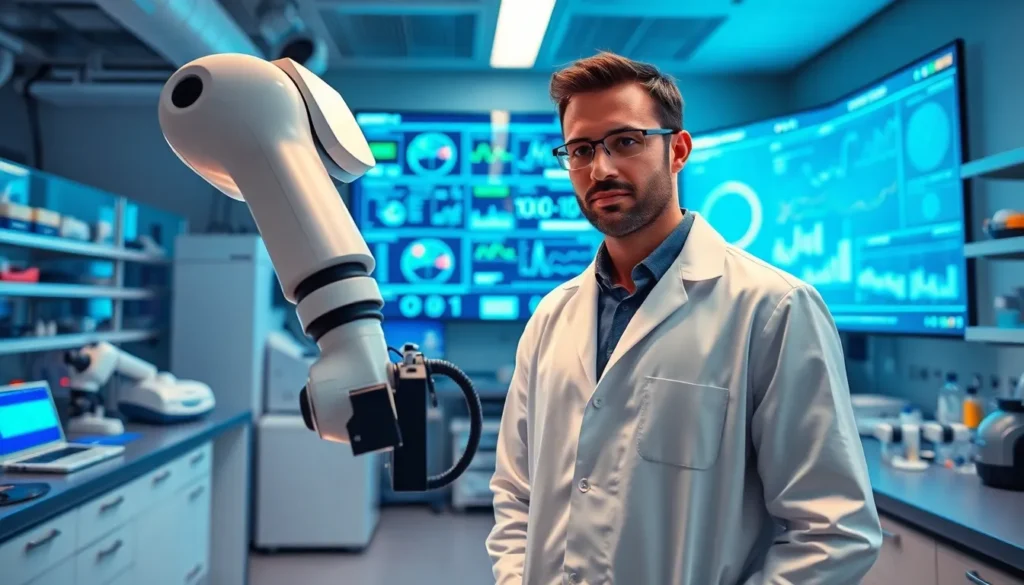Table of Contents
ToggleWater is the essence of life, but wasting it? That’s so last season. With smart water-saving devices, homeowners can turn their plumbing into a superhero, battling waste while saving money. Imagine a world where your faucet doesn’t just drip but dances to the rhythm of conservation.
These nifty gadgets not only help the environment but also make your wallet sing. From smart irrigation systems that know when your plants are thirsty to showerheads that practically remind you to get out of the water, these devices are revolutionizing how we think about H2O. So why let your water bill take a dive when you can make a splash with smart tech? Dive in and discover how these devices can transform your home into a water-saving wonderland.
Overview of Smart Water-Saving Devices
Smart water-saving devices play a critical role in modern water conservation efforts. These devices utilize advanced technology to monitor and manage water usage efficiently. Individuals can reduce water waste significantly by implementing solutions like smart irrigation systems, which adjust watering schedules based on weather forecasts or soil moisture levels.
Efficient showerheads can also enhance water savings. Many of these fixtures deliver a consistent spray while using less water, enabling users to enjoy a comfortable shower experience and reduce monthly water bills. Additionally, smart leak detectors provide peace of mind. These devices alert homeowners of leaks or unusual water flow, facilitating timely repairs and preventing costly damage.
Smart toilets represent another innovative solution in the water-saving sector. These toilets use sensors to optimize water usage with each flush, adjusting based on user needs. Furthermore, smart faucets come equipped with touchless technology, reducing unnecessary water flow while promoting hygiene.
Water management apps connect to various smart devices, allowing for real-time monitoring and control. Homeowners can track water usage trends and receive personalized recommendations for improving efficiency. Such data empowers users to make informed decisions regarding their water consumption.
Incorporating these devices into daily life not only supports environmental sustainability but also drives down water costs. As communities recognize the value of smart water solutions, these technologies become vital tools in promoting responsible water use practices.
Benefits of Using Smart Water-Saving Devices

Smart water-saving devices significantly enhance water conservation efforts in homes. These technologies not only reduce waste but also promote responsible usage across various applications.
Environmental Impact
Smart water-saving devices reduce overall water consumption, which leads to less strain on local water supplies. Efficient irrigation systems adapt to weather changes, ensuring only necessary watering occurs. Leak detectors play a vital role in facilitating rapid repairs, minimizing the environmental impact of leaks. Additionally, low-flow showerheads and faucets significantly decrease water flow without sacrificing comfort. The cumulative effect of these devices helps to protect ecosystems by conserving precious resources. Homeowners contribute to sustainability efforts when they embrace these innovative solutions.
Cost Savings
Smart water-saving devices lower utility bills by minimizing excessive water use. Homeowners often see reductions in monthly costs when using efficient appliances like smart toilets and touchless faucets. Water management apps track consumption in real-time, offering personalized recommendations for improving efficiency. Adjusting irrigation schedules based on moisture levels can lead to significant savings over time. Many communities even provide rebates for those who install water-saving devices, further enhancing affordability. These devices represent a worthwhile investment that benefits both personal finances and the environment.
Types of Smart Water-Saving Devices
Smart water-saving devices offer innovative solutions for efficient water management. By employing advanced technology, these devices help homeowners reduce water waste.
Smart Irrigation Systems
Smart irrigation systems tailor watering schedules based on real-time weather data and soil moisture levels. These systems adjust automatically, ensuring gardens receive optimal hydration without excessive water use. Sensors detect rainfall and moisture, significantly reducing the need for manual intervention. Homeowners can access customizable settings through smartphone apps, enhancing control over their landscape irrigation. Overall, smart irrigation not only conserves water but also promotes healthier plants.
Smart Showerheads
Smart showerheads revolutionize the showering experience with efficient water usage. These devices track water flow and adjust pressure accordingly, maintaining comfort while minimizing water consumption. Some models even offer features like timers or temperature control, promoting a more conscientious shower routine. By reducing flow rates without sacrificing performance, smart showerheads help households achieve significant water savings. These devices appeal to eco-conscious consumers looking to cut expenses and conserve resources.
Leak Detection Sensors
Leak detection sensors play a crucial role in preventing water waste and damage. These devices monitor plumbing systems and alert homeowners to leaks through smartphone notifications. Quick responses to leaks minimize water loss and prevent costly repairs. Some sensors integrate with home automation systems, allowing for seamless management of water usage. By keeping homes safe from undetected leaks, these sensors foster responsible water management and contribute to long-term conservation efforts.
How to Choose the Right Smart Water-Saving Device
Selecting an effective smart water-saving device requires careful consideration of several factors. Understanding unique needs helps in making the right choice.
Factors to Consider
Evaluate the specific water usage patterns for your home. Identify high-consumption areas like bathrooms, gardens, or kitchens. Analyze product features, ensuring compatibility with existing plumbing systems. Look for devices that offer real-time monitoring and data analytics for improved efficiency. Review customer feedback to gauge performance and reliability. Consider the long-term cost savings, focusing on devices with energy-efficient ratings. Lastly, check if the product qualifies for local rebates or incentives.
Installation and Maintenance
Assess the installation requirements for each device. Some options may require professional installation while others offer DIY setups. Ensure compatibility with current plumbing to avoid complications. Familiarize yourself with maintenance needs, as some devices require regular updates or sensor checks. Regularly clean components to maintain optimal performance and prevent malfunctions. Monitor system alerts for recommended maintenance to enhance longevity. Choosing devices with simple maintenance procedures can save time and effort.
Adopting smart water-saving devices is a proactive step toward effective water conservation. These technologies not only help reduce water waste but also offer financial benefits for homeowners. By integrating these devices into daily routines, individuals can significantly lower their water consumption while contributing to environmental sustainability.
Smart devices like irrigation systems and leak detectors provide real-time insights that empower homeowners to manage their water usage more efficiently. As awareness of water conservation grows, embracing these innovations becomes essential for both personal and ecological health. Investing in smart water-saving solutions is a wise choice for those looking to make a positive impact on their homes and the planet.




